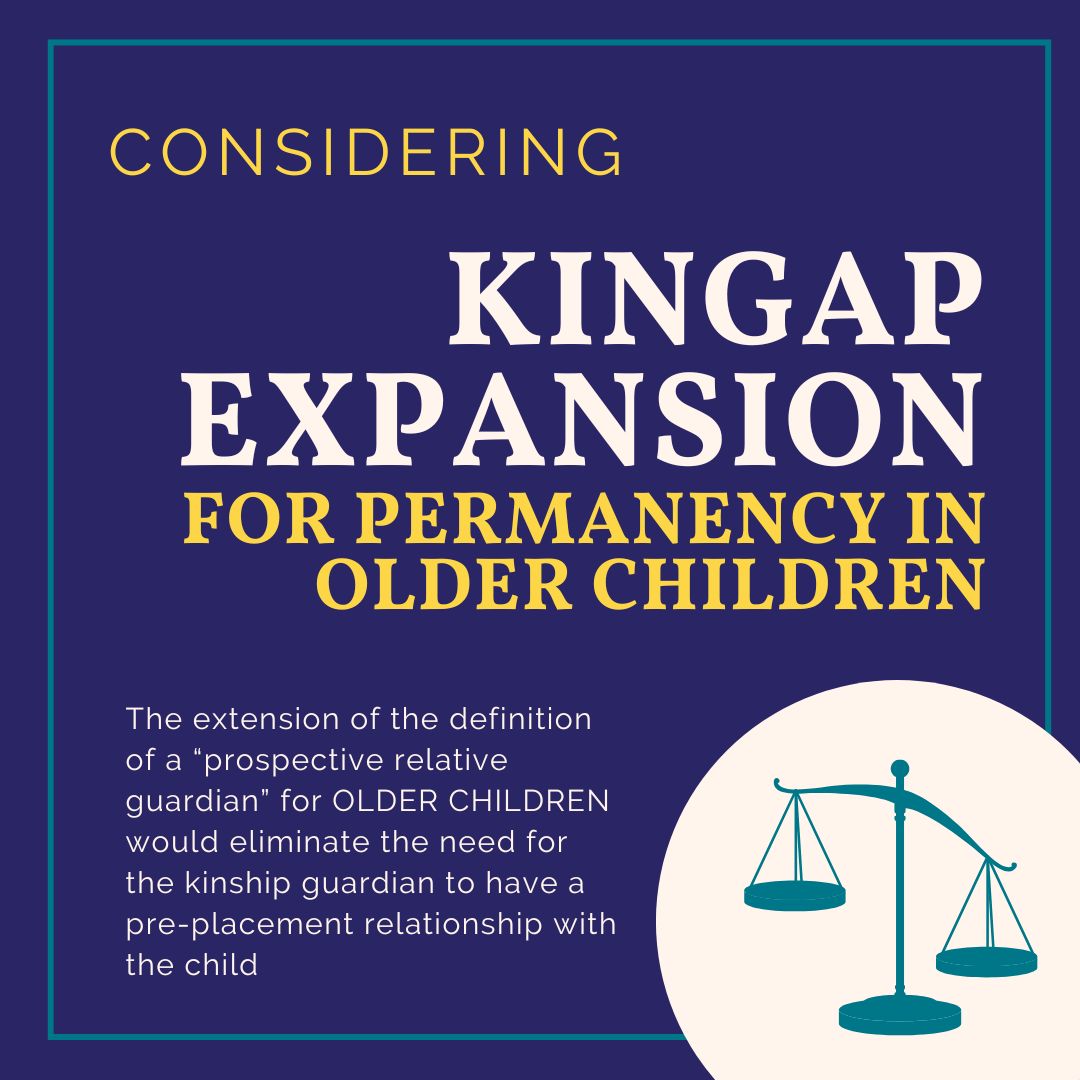The extension of the definition of a “prospective relative guardian” would eliminate the need for the kinship guardian to have a pre-placement relationship with the child; therefore, increasing permanency options for children in foster care and making sibling groups eligible to be placed together in KinGAP arrangements.
An expansion of KinGap eligibility would provide a birth parent an alternative before the court terminated their parental rights. The law and the interpretation by the courts have recognized the bonding that occurs between the child and foster parent; after a child has been in their care for a year or more. Extending the designation of Kinship is a natural progression based on the current law. This expansion of the law would also particularly benefit a subset set of children who presently have no obvious permanency options. An example are children whose birth parents’ rights have been terminated; however, for various reasons they are not able to be adopted. Presently, these children would have to remain in foster care until they age out of the system. There are no viable alternatives for these children who are mainly teenagers, disabled children, and children in sibling groups – where some of their younger siblings have been adopted.
The current array of options is too narrow and thus prevents many youths from achieving permanency as captured in the statistics by The National Foster Youth Institution:
- More than 23,000 children will age out of the US foster care system every year
- There is a direct correlation to the age of a child who enters foster care and their likelihood of being successfully discharged to a permanent home instead of being legally emancipated.
- In the U.S. 397,122 children are living without permanent families in the foster care system.
- The number of these foster kids who are eligible for adoption, on average, every year: 101,666
- Children with a diagnosed disability of any kind, including a learning disability, are twice as likely to age out of the foster care system
Under the proposed change, these youth would be given the opportunity for another option which would allow them to achieve permanency; thus, exiting the foster care system and into families.


